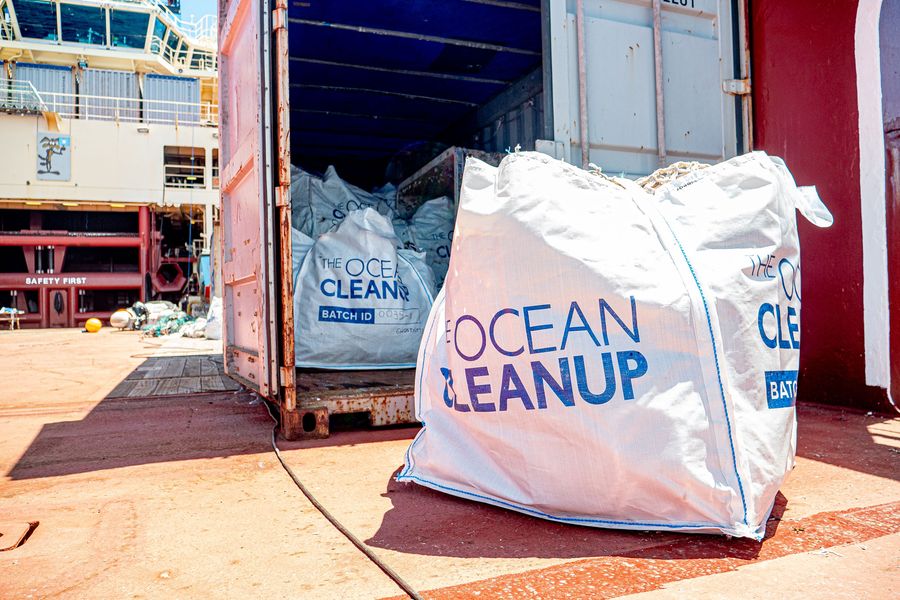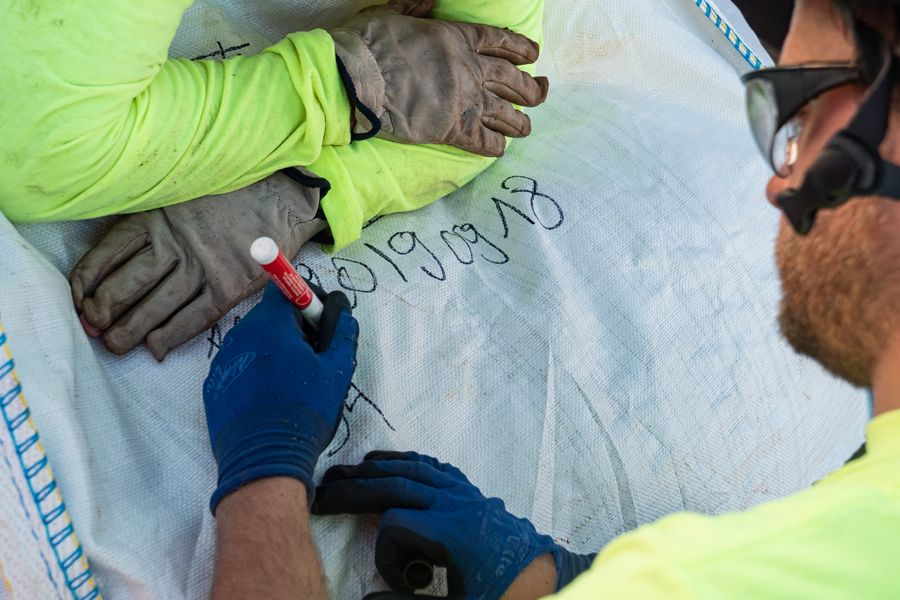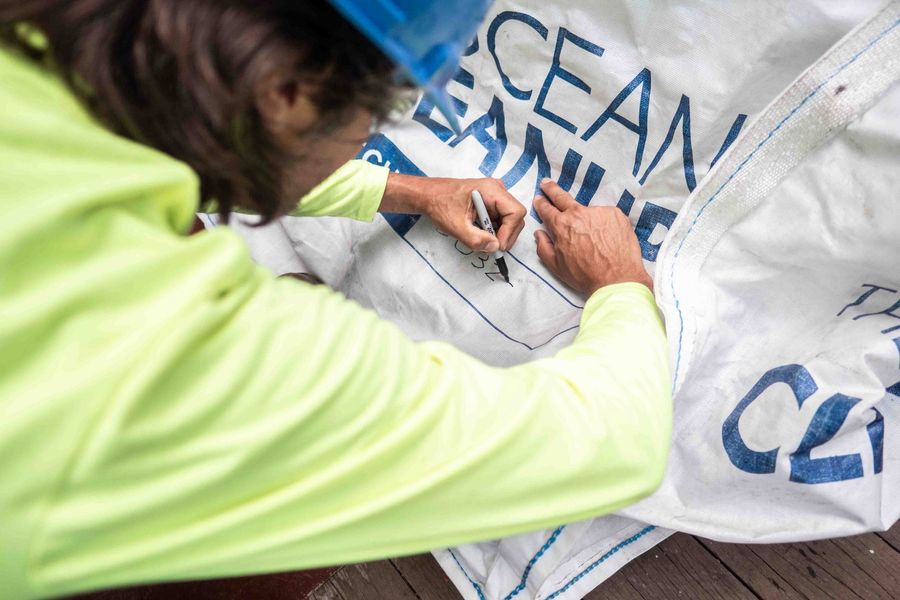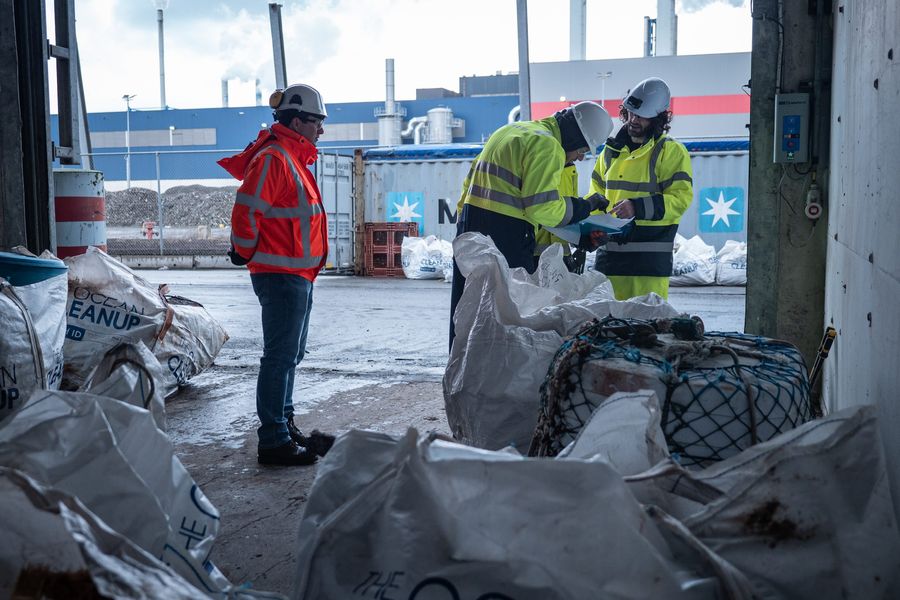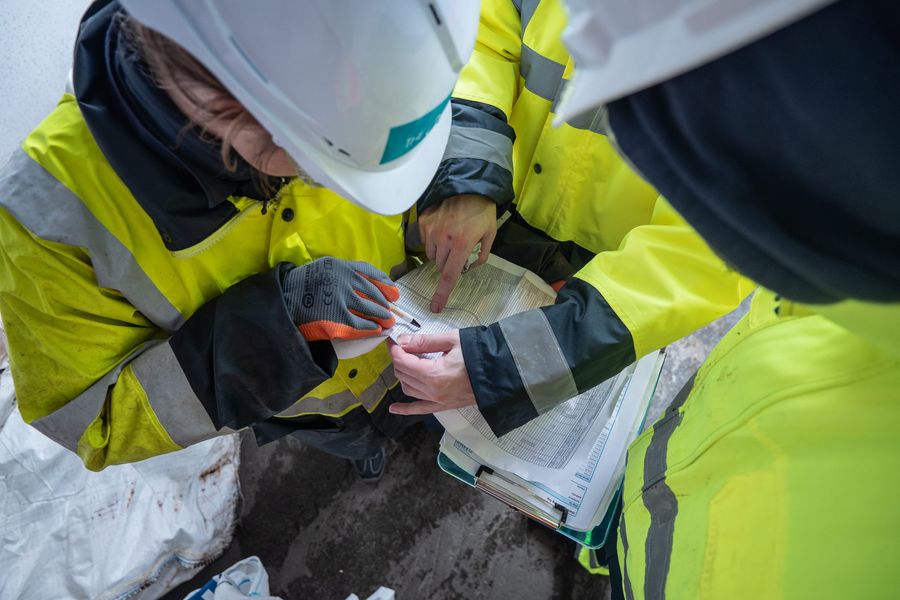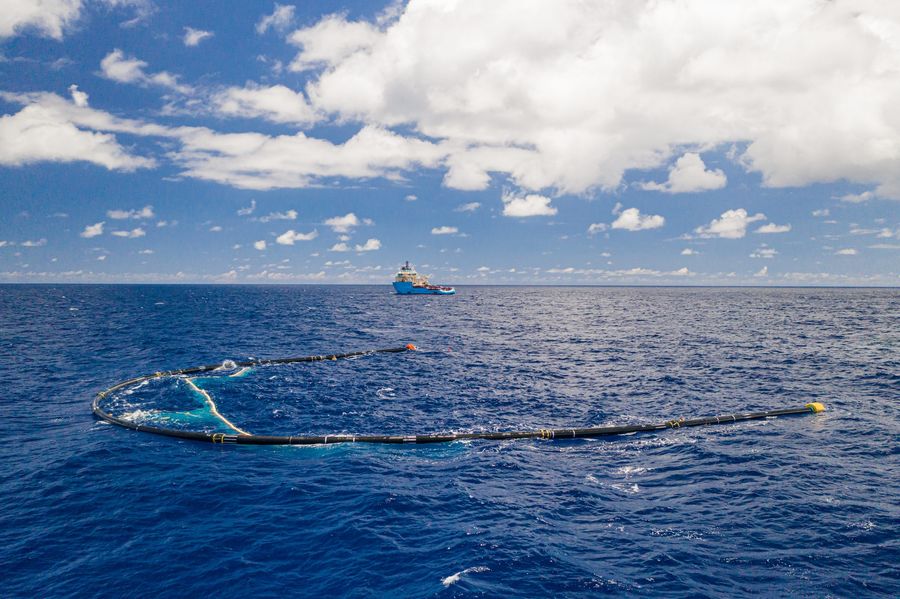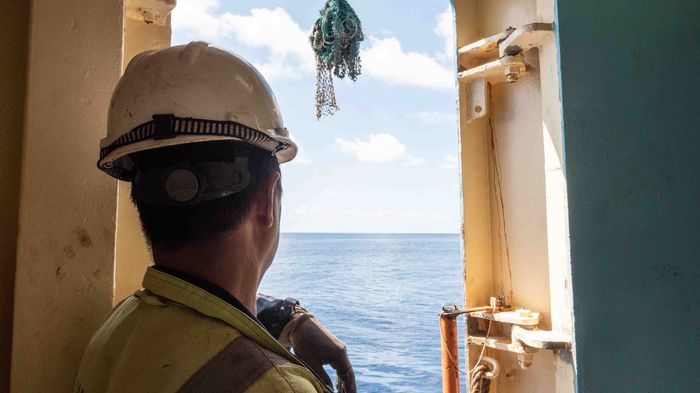
The Plastic Journey: Ten Steps to Create a Product from Pollution
Back to updatesWith our first catch from the Great Pacific Garbage Patch, we aim to create beautiful, sustainable products. The proceeds of which will fund the continuation of the cleanup – thereby turning a problem into a solution. We call this process the Plastic Journey and, last year, when the catch landed on shore, we invited you to follow along with us.
The Plastic Journey consists of ten steps – starting from the moment we caught the plastic to the day we start our next cleanup operation. If we are successful in this first attempt to create a product made from this special material, these will be the same steps for any other product we make.
Step 1: Catch, secure, and track the plastic
When we catch the plastic in the Great Pacific Garbage Patch and bring it onto the vessel, we dry, bag, and weigh it before tagging it with GPS coordinates securing it with tamperproof seals. These steps are laid out in the standard created by DNV GL, and allow the plastic’s origin to be traced from the moment it leaves the ocean. Traceability is maintained throughout the Plastic Journey by keeping detailed documents and evidence (taking photos and videos) and it allows us to verify that the plastic in your product actually does come from the ocean.
The plastics we collect are rigid plastics and ghost nets – the persistent floating types of objects that endure the distance to the patch. More specifically, they are polyolefins, polyethylene (PE), high-density polyethylene (HDPE), and polypropylene (PP); these plastics are less dense than the seawater, meaning they float.
For more information about the plastic found in the patch, you can check out our comprehensive study on the topic.
Step 2: Plastic transportation
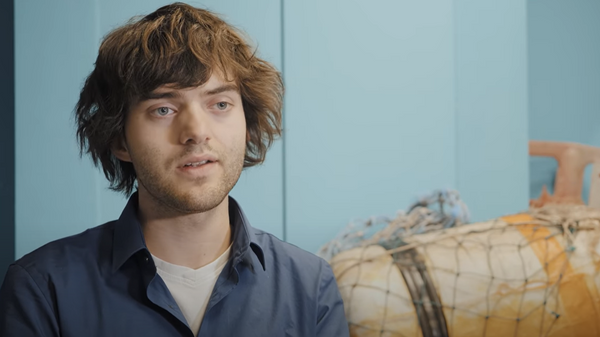
Now that the plastic has been captured, we must bring it to land to deliver it to the experts who can help us transform it. For this first Plastic Journey, step two took place on December 12 last year in Vancouver (CA). At present, there are no options to recycle this material offshore if the material is meant to be used for products. There were also no suitable options in North America that met our specific chain of custody, technology, and cost requirements. Therefore, the rest of the Plastic Journey takes place in Europe.
Step 3: Plastic pre-sorting
The two main fractions of the catch have different makeups from one another – ghost nets are fibrous, while rigid plastics are hard. Because their properties vary significantly, these fractions must be recycled and processed separately. At this point in the Plastic Journey, we pre-sort the plastic so that we can move forward with one fraction for this product.
For our first product, we chose to focus on the ghost nets, because this plastic was better suited for the current product needs than the rigid plastics. The material we are not using for this first product will be used for recycling research and, if research proves feasible, future products.
Step 4: Plastic recycling
The ghostnets require specific recycling machines for its fibrous material composition. Because ghostnets have been exposed to the forces of the ocean, recycling is more complex than would be for regular fishnets made of the same polymers. To recycle them the ghostnets will undergo the following process: sorting, shredding, washing and drying, and extrusion.
- Sorting: ghostnets are derelict fishnets and ropes that have been entangled in the ocean. Fishnets and ropes can be different polymer types, and even one rope or fishnet can be made up of multiple polymers. Plastics must be recycled by polymer type (this is what those numbers inside the triangle arrows on packaging represent), otherwise the new material will not be suitable for processing into a new item. Therefore, if we are to make a durable product, we must sort once again to recycle it to the strongest material possible.
- Shredding: this phase is necessary to reduce the size of the material for further processing and to effectively clean every fiber.
- Washing and drying: the material gets a thorough cleaning to remove all dirt and debris.
- Extrusion: the plastic is now re-melted to become granulate – which will be used to mold into a future product.
Step 5: Plastic testing
When we have the granulate, we must verify that the plastic meets the regulatory requirements for the desired product before it can undergo further processing. In step five, an independent, accredited laboratory will check for contaminants to ensure that the product is safe for use the moment it is in your hands. We will also test the mechanical, physical, and thermal properties of the plastic.
The results in this step will help us to determine what can be produced with the material and the feasibility of various plastic processing methods, such as injection molding, extrusion, compression molding, or rotational molding.
Step 6: The Ocean Cleanup material creation
Before we can mold the plastic into its new form to become a product, it will require a small, but necessary, amount of additives, such as stabilizers and pigment. These additives will allow the material to achieve the performance and technical characteristics required for manufacturing, while at the same time create a beautiful, ocean-inspired aesthetic for the product. This combination of additives will be embedded in a carrier, called a masterbatch. Once developed, it will be mixed with the plastic to create The Ocean Cleanup material.
Step 7: Product manufacturing
With The Ocean Cleanup material ready, the manufacturing process can begin. A reputable production partner will ensure that the plastic is effectively incorporated into the creation of this new, unique product that is ready for shipping and use.
Step 8: Shipping and logistics to consumers
In step eight of the Plastic Journey, the new product will be shipped directly to our supporters. The first wave of supporters (those who signed up prior to the launch of the product) will have first dibs on the limited-edition product. If they are still interested in this item once it becomes available, they will have the opportunity to make an additional donation to call the product their own. Their initial 50 USD/EUR donation will be applied to the final donation amount.
Step 9: In your hands
The day you receive your product will be a momentous step in the Plastic Journey. It is the beginning of your product’s life – which we hope will be long and fruitful, one that is entirely up to you what it will entail. That said, the product will be designed to be recycled, should you ever choose to retire it – with the intention that this plastic does not return to the ocean.
Step 10: Continuation of cleanup
All proceeds received for the products will be reinvested in continued cleanup operations. The day we return to the Great Pacific Garbage Patch will be possible because of support like yours.
THE FUTURE LOOKS BRIGHT
We are optimistic that we can complete the remaining steps of the Plastic Journey, but, because no one has made a product out of plastic from the Great Pacific Garbage Patch, our success is not promised. Since there is this element of uncertainty, we have chosen to wait to share what the product will be; we want to set realistic expectations for our supporters. Once we can confirm the product and its price, supporters who signed up can choose if they want to make the additional donation to get their hands on The Ocean Cleanup’s first limited-edition product. It will be an exciting moment when we know that we can do this, so we will find the best way to debut the product that matches our enthusiasm to share it with you.
If you have been following since the plastic was onshore, we will continue to update you as we complete each step. And, if you are just now learning about it, it’s not too late to get a front-row seat to the Plastic Journey.
Update February 21st, 2022: The first product, The Ocean Cleanup Sunglasses, are out of stock. To see more about this product, click this button:


